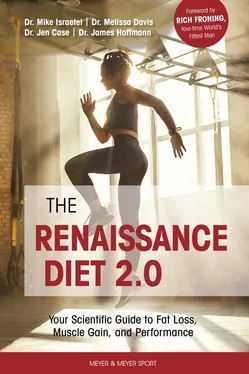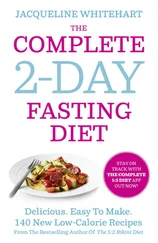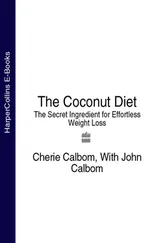Exercise/Training:Any form of working out that you do requires energy, and the more you work out, the more energy you need.
Height and Body Proportions:Taller people usually have more surface area than shorter people of the same weight. It takes quite a few calories to keep body temperature stable with more surface area exposed to the environment. Likewise, any other physical features that increase surface area can increase metabolism.
Stress:Contrary to popular belief, stress actually boosts calorie burning via constant low-level activation of fight-or-flight pathways. It is not at all uncommon for people to gain weight when chronically stressed, but this is generally due to stress-induced excess eating or water retention from stress hormones. Stress on its own usually contributes to weight loss.
Recovery Demands:Not only does hard training burn calories directly, it causes damage to muscle tissues (deliberately) and depletes energy stores. What this means in the grand scheme of things is that your body will require extra calories to perform repairs.
Genetic Metabolic Factors:Some people have very efficient metabolisms and convert more of the energy from the food they eat into other usable forms of energy. Though metabolisms do not vary widely on average, over a long period of time these small variances contribute to the ease or difficulty of weight loss observed across dieters.
Percent Body Fat:Fat is a heat insulator and requires a bit less energy to be maintained than muscle. Thus, individuals who are leaner will have to burn more calories by a small fraction to stay the same weight than similarly sized people with more body fat and less muscle. On the other hand, carrying extra fat can cause movements to become less economical, thus increasing energy expenditure. A surplus of fat can also make thermoregulation in the heat more difficult, requiring additional energy expenditure.
Drug Intake:Stimulants like caffeine boost the metabolic rate to a small extent and burn a tiny amount of extra calories.
Sex:Due mostly to body size, muscle mass, and hormonal differences, men burn more calories than women. If body size and muscle mass differences are obviated, the remaining difference is very small, but still exists.
•Calories are the single most powerful nutritional variable influencing bodyweight, body composition, and performance.
•The goals of gaining muscle and losing fat are generally antagonistic and should be pursued separately in distinct dieting phases.
•The process of gaining muscle is best achieved with a hypercaloric condition, and the process of losing fat is best achieved with a hypocaloric condition.
•Daily calorie needs can vary significantly from day to day, both between and within individuals.
Once calories have been accounted for, macronutrient ratios are the next most important diet principle for adjusting body composition and enhancing performance. Macronutrients are made up of the three nutrients that provide most of the calories in a diet; because they are eaten in relatively large (macro) quantities, we refer to them as macronutrients. These macronutrients are protein, carbohydrate, and fat. Alcohol and sugar alcohols also have calories, but for health and performance they should constitute a very small minority of total calorie intake.
Generally, the macronutrients provide the calories that bodies need to function. While all macronutrients contain calories, each type has unique properties and effects. In selecting which and what quantities of macronutrients to eat, we must consider both the calorie demand of the dieter and the unique effects of each macronutrient on body composition and performance. The ratio of macronutrients used to fill a daily calorie total greatly impacts body composition change and athletic performance. Macronutrient ratios can play an important role in the percent of muscle gained during hypercaloric dieting, the amount of muscle retained during hypocaloric dieting, the amount of energy available during training and competition, and other factors such as baseline hormonal function and health.
Macronutrient considerations should still come only after calorie balance has been addressed. Perfect macronutrient ratios for muscle-loss prevention on a fat-loss diet become moot if there is no calorie deficit. In much the same way, although macronutrient ratios can modify the rates of muscle gained, muscle gain is primarily driven by calorie surpluses (as long as the right kind of training is being done).
If your diet uses appropriate calories and macronutrient ratios, you should get about 80% of the total possible diet effects on body composition and performance. In fact, adjusting only calories and macronutrients sums up the “if it fits your macros” (IIFYM) approach. IIFYM instructs that “if your calories and macronutrients are well established, you will get the majority of potential performance and physique benefits possible from diet.” This is a great place to start, especially for those newer to dieting.
Throughout this chapter, all macro recommendations will be given per pound of bodyweight and made with the assumption of a relatively lean individual (under 30% fat). The calculations given subsequently in this book are slightly more precise when done per pound of lean body mass (LBM) rather than pound of bodyweight. However, obtaining an exact LBM is difficult even with sophisticated equipment, so bodyweight can be used as a proxy as long as one is relatively lean. If a person has greater than 30% fat, using a value between bodyweight and estimated LBM might be a bit better.
CALORIE CONTENT OF MACRONUTRIENTS
Calories and macronutrients are not independent variables in nutrition. Calories, as described in the last chapter, are units of energy. All the macronutrients supply energy and, therefore, contain calories. The per gram calorie content of each macro is:
•Protein: 4calories per gram
•Carbohydrate: 4calories per gram
•Fat: 9calories per gram
As you can see, while both protein and carbohydrate carry only 4 calories per gram of macronutrient, fats have more than double, with 9 calories per gram of fat. This information will play a role in your diet construction and in how you allocate amounts of macronutrients to fit within your calorie constraints.
The Caloric Constraint Hypothesis
Since we cannot consume macronutrients without their inherent calorie content, and since calorie considerations are first priority in diet design, all three macros must be manipulated in concert to fit pre-made calorie restrictions or demands. This idea is termed the Caloric Constraint Hypothesis (CCH). Since your dietary goal will begin with a total calorie count, this total will dictate how macronutrients can be distributed within your diet. When one macronutrient amount is raised or lowered, either one or both of the remaining macronutrients must be adjusted as well to keep calories constant. Since all of the macronutrients have an effect on diet outcomes, it would be incorrect to simply say “eat more protein to grow muscle” without considering what the effect will be on carbohydrate and fat intakes. Thus, in assigning macronutrient totals, you should determine the total calories needed for the goal, determine optimal ranges of macronutrient totals, and then adjust those macronutrients to both meet minimum values and fit within the caloric constraints. There may be a few possibilities within the constraints and macro ranges where trade-offs can be made for desired outcomes or preferences. In chapter 10we will go into exactly how to make the decisions and calculations for macronutrient ratios within a caloric constraint.
Читать дальше












